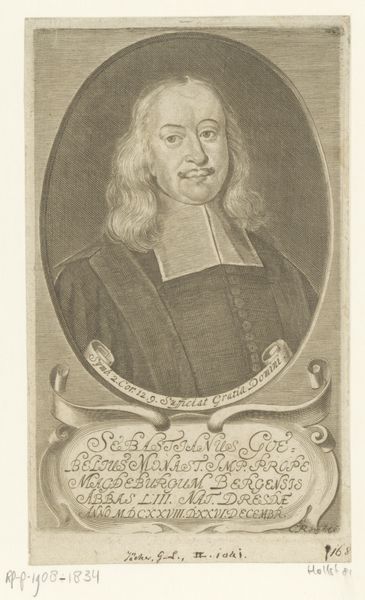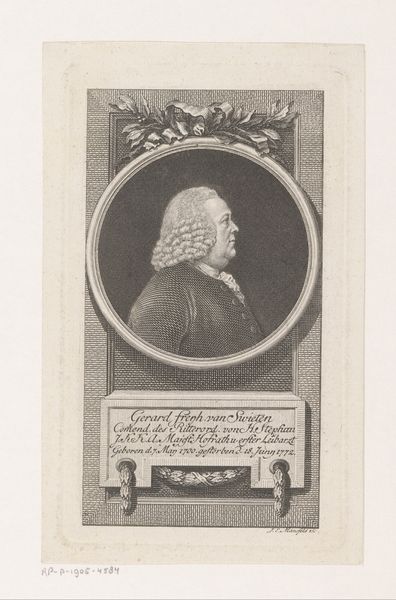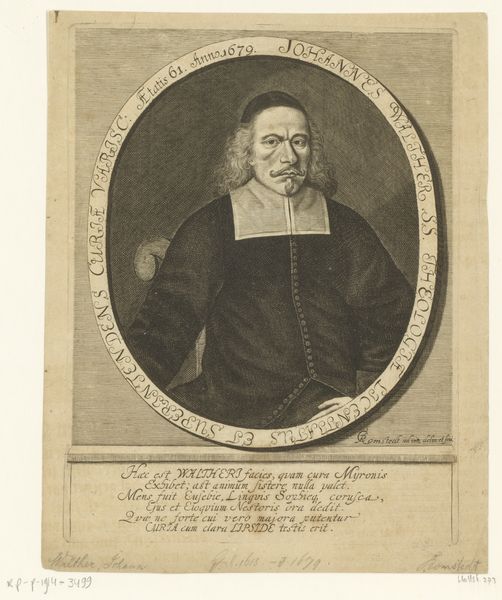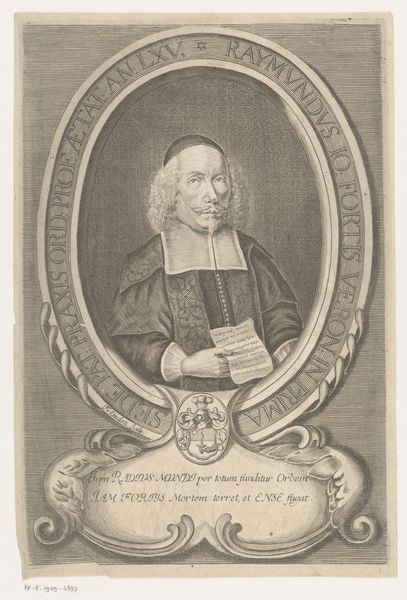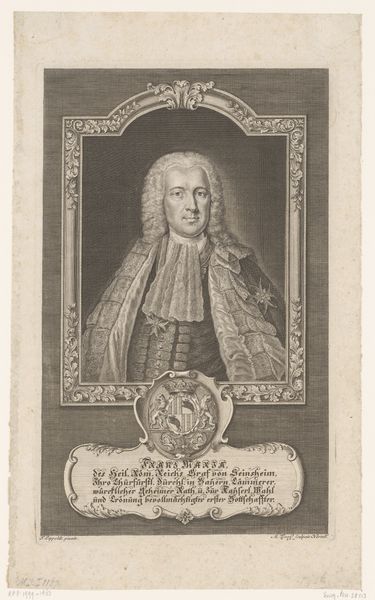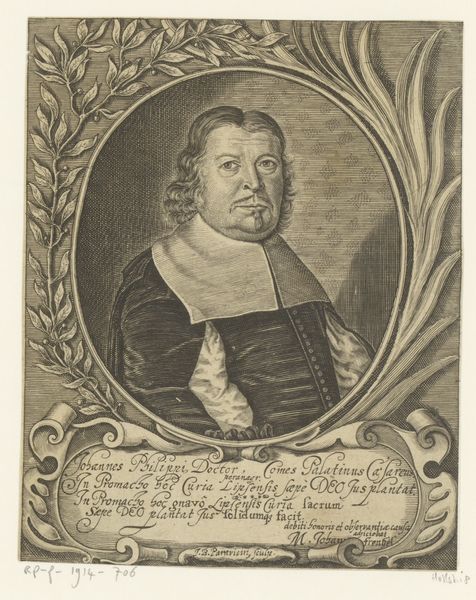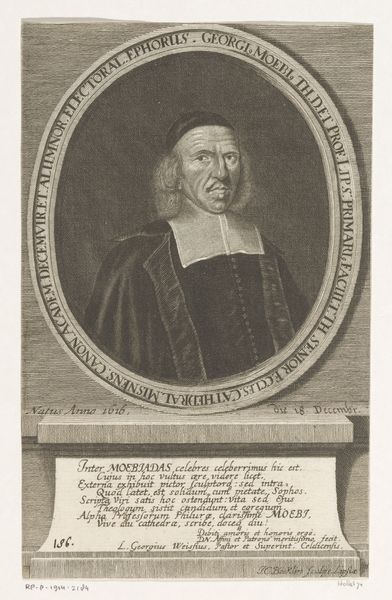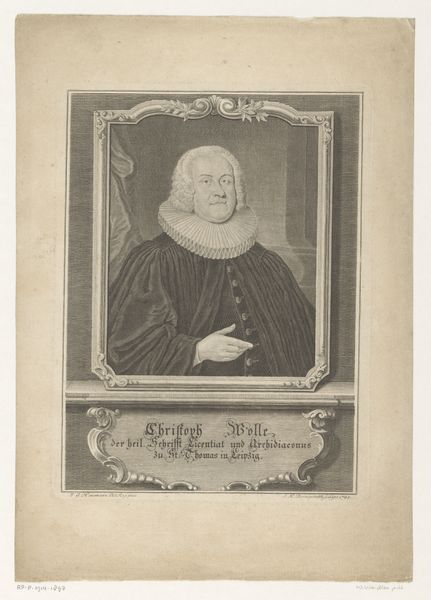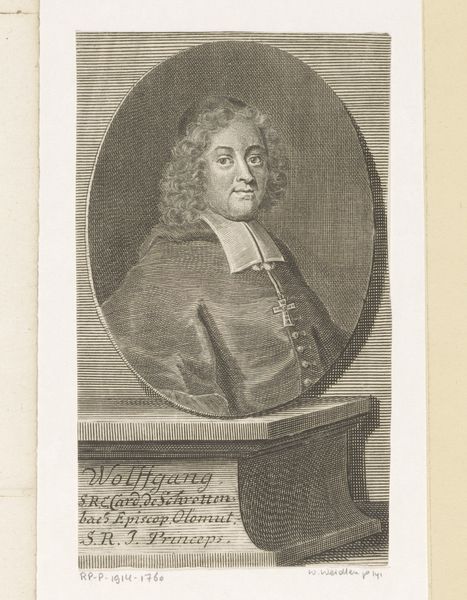
print, engraving
#
portrait
#
baroque
# print
#
history-painting
#
engraving
Dimensions: height 151 mm, width 84 mm
Copyright: Rijks Museum: Open Domain
Curator: Here we have a print dating back to 1700, titled "Portret van Johann Brunnemann," by Johann Christoph Boecklin. It’s currently held here at the Rijksmuseum. The artwork is an engraving in the baroque style, part of a long tradition of history-based portraiture. Editor: Immediately, I'm struck by this feeling of intense formality, like the world’s most serious stamp. All straight lines and precise angles. Even the guy's expression – pure stoicism etched in ink. Curator: Yes, the piece adheres to the established conventions of portraiture, particularly Baroque portraiture, that was important for the patrons that acquired it. The portrait isn’t just about the person but what they stand for, what they want to project and how the piece fits into the wider narrative. Editor: Well, he's projecting seriousness really well! The tightly framed oval, those unwavering eyes – it almost feels like he's daring me to smile. What can you tell me about why someone would commission it and the social environment that may have caused it? Curator: Certainly. It’s interesting that Boecklin opted for the print medium because it could have circulated further than a painting hung in a home, potentially influencing wider perceptions. The inscription at the bottom provides more details – “Johannes Brunnemann,” including his birth and death dates, suggesting a commemorative function and his allegiance to devout prayer is an “optimal status”. Editor: Ah, so we've got a commemorative piece then, designed not just to show the man but the _ideal_ of the man. Clever little scroll device at the base that speaks volumes! Do you think it achieved its goal of memorializing him or furthering any message? Curator: Absolutely, within the circles that engaged with prints. It perpetuated an image of the sitter that echoed values deemed important. Beyond just being a visual record, it acts as an affirmation of social and moral standards that may also reach a broader audience. Editor: You've given me a lot to consider here. This severe looking stamp turns out to be a pretty complex statement. The layers are more interesting than that oval at first suggested! Curator: That's the joy of studying art and looking deeper; things aren't always quite as straightforward as they may appear!
Comments
No comments
Be the first to comment and join the conversation on the ultimate creative platform.
